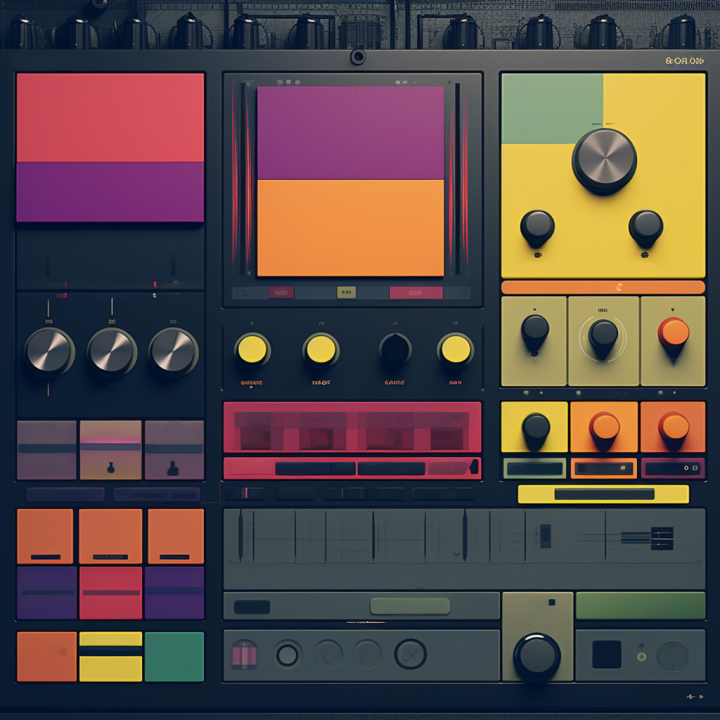
photo from http://monBeats.art
Mastering Ableton 11’s Arpeggiator: A 10-Step Guide
Introduction:
Ableton Live 11’s Arpeggiator is a versatile tool that can take your music production to new heights. In this step-by-step guide, we’ll explore how to make the most of this feature and integrate it seamlessly into your workflow. By following these ten points, you’ll unlock a world of creative possibilities and revolutionize your music production journey.

Step 1: Familiarize Yourself with the Arpeggiator Interface
Begin by opening Ableton Live 11 and locating the Arpeggiator device in the MIDI Effects section. Familiarize yourself with the various controls, including rate, gate, style, and range.
Step 2: Understand the Probability Feature
Learn how to use the Probability feature to introduce an element of randomness to your arpeggios. Experiment with different probability values to add unpredictability to your sequences.
Step 3: Embrace Polyphonic Sequencing
Explore the power of polyphonic sequencing. Understand how to transform complex chord progressions into cascading melodies effortlessly, and experiment with different chord voicings for unique results.
Step 4: Lock Arpeggios to Specific Scales
Discover how to lock your arpeggios to specific scales. This ensures that even complex chords remain harmonically coherent. Experiment with different scales to find the perfect musical palette for your compositions.
Step 5: Master Groove Patterns for Rhythmic Variation
Learn how to use adjustable groove patterns to add rhythmic diversity to your arpeggios. Experiment with different groove settings to infuse your melodies with a natural, human feel.
Step 6: Utilize Velocity and Gate Controls
Explore the power of velocity and gate controls to add dynamics and articulation to your arpeggios. Experiment with different settings to create arpeggios that ebb and flow, breathing life into your compositions.
Step 7: Unearth Hidden Melodies within Chords
Experiment with arpeggiating chord progressions to discover hidden melodies. This process can lead to unexpected and innovative musical directions, giving your tracks a unique edge.
Step 8: Incorporate Arpeggios into Simple Chord Progressions
Learn how to use the arpeggiator to add depth and complexity to simple chord progressions. Create intricate melodic interplay by experimenting with different arpeggio styles and settings.
Step 9: Infuse Arpeggios with Rhythmic Diversity
Experiment with different groove patterns to infuse your tracks with a sense of organic rhythm. This will set your compositions apart from static loops and add a dynamic element to your music.
Step 10: Live Performance with Arpeggiator
Discover how to incorporate the arpeggiator into your live performance setup. Use its dynamic controls for real-time manipulation, giving your sets a dynamic and unpredictable edge.
Bonus Tips:
Incorporating Arpeggios Into Your Workflow:
Now that we’ve explored the capabilities of Ableton 11’s Arpeggiator, let’s discuss practical applications. Incorporating this powerful tool into your workflow can yield astounding results.
- Melodic Embellishments: Use the arpeggiator to add depth and complexity to simple chord progressions, creating intricate melodic interplay.
- Rhythmic Diversity: Experiment with different groove patterns to infuse your tracks with a sense of organic rhythm, setting them apart from static loops.
- Live Performance: The arpeggiator is a formidable tool for live performance. Its dynamic controls allow for real-time manipulation, giving your sets a dynamic and unpredictable edge.
- Sound Design: Beyond melodies, the arpeggiator can be used for innovative sound design. Experiment with different synthesis parameters to create entirely new sonic textures.
Conclusion:
By following this guide, you’ll be well on your way to mastering Ableton Live 11’s Arpeggiator. With its innovative features and powerful controls, this tool offers a wealth of creative potential. So, dive in, experiment, and let your creativity soar. Your next musical masterpiece is just a sequence away!
If you want to learn more about Ableton and Music Production check out: http://monBeats.ART/blog
Happy producing!